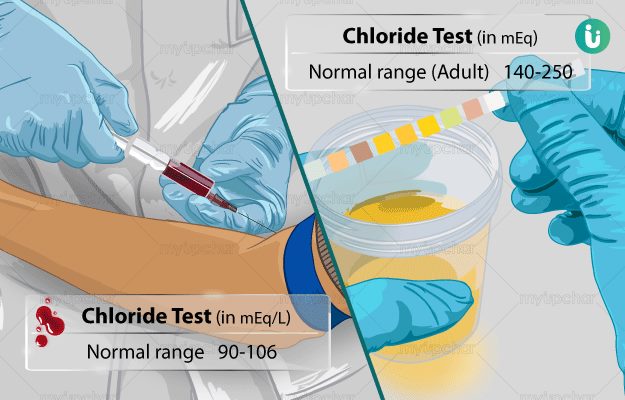What is a Chloride test?
A chloride test is a laboratory screening test for the presence of chloride ions in blood and urine. Chloride is a major extracellular anion responsible for maintaining the electrolyte balance in the body. It also helps maintain the osmotic pressure and acid-base balance and aids in digestion.
The concentration of chloride may rise in the serum due to dehydration, excessive intake of chloride, renal insufficiency or metabolic acidosis. Also, chloride concentration may decrease in some disease conditions. If a doctor suspects electrolyte imbalance, he may advise a chloride test.
Blood chloride testing and random or a 24-hour urine chloride test are simple screening methods to monitor fluid and electrolyte balance in the body and to check the effects of low salt diet in patients. Chloride may also be measured in the sweat of patients with cystic fibrosis














